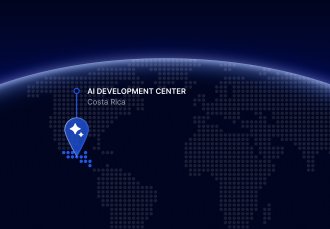
Contact us
Our team would love to hear from you.

In this article, we will describe the cultural and linguistic nuances of the Arabic language, the key challenges of Arabic localization, and our experience working with the Arabic market.
Arabic is the sixth most spoken language in the world. Hundreds of millions of people use it in their everyday lives. With at least 30 different dialects, it is the official language in 25 countries. Entering the Arabic market is an important milestone for companies looking to expand their brand presence and take their software to the next level, and software localization is an essential step. However, Arabic is a complex language, which can pose challenges for companies trying to adapt their products; the key is learning its nuances.
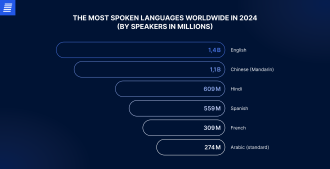

Here are the essential things to consider before entering the Arabic market and starting the localization of a software product:
Arabic is spoken in the Middle East and North Africa (MENA) region, a vast area that includes many different dialects of the language. Modern Standard Arabic (MSA) is the most spoken version of the language and is commonly used and understood by the Arabic community. In addition to MSA, other major varieties of the Arabic language are spoken by residents of specific areas, including Egyptian, Maghrebi, Gulf, Mesopotamian, Peninsular, and Levantine.
Many cultural concepts are embedded in the Arabic language, including traditions, customs, and taboos. When localizing software products for the MENA region, it’s vital to respect local culture and history and consider how they affect customer behavior. Titles and honorifics, for example, play a significant role in communication and are used to express respect and consideration. Religion is a sensitive topic for Arabic speakers—it affects many areas of life, society, law, and even politics. Arabic culture relies on traditions, which should be reflected in the localized content to respect the values of the audience.
Similes, metaphors, figures of speech, proverbs, and even rhyming are all major characteristics of the Arabic language. Some terms that can be expressed with a single word in English have many different variations in Arabic, each carrying slight differences in meaning. These unique and significant characteristics must be considered during the localization process to convey messages clearly and accurately.
Localization involves more than just translating words from one language into another. The key is to understand the target audience and convey messages in a way that resonates with them. Below are some of the common challenges companies encounter when preparing software launches for the MENA region.
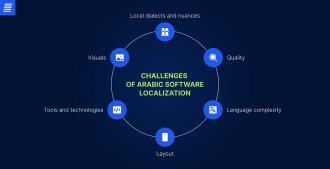

Choosing the right language dialect depends on the target audience. When entering the MENA market, it is reasonable to stick with MSA since it is used for law, news, official documents, literature, and other formal settings across all Arab countries. However, to effectively connect with a target audience in a specific country of the MENA region, companies must recognize and adapt to dialect nuances, ensuring that their messages resonate with software users in that particular location.
In addition to local dialects, some MENA countries may also have language regulations. In Saudi Arabia, for example, the language used in marketing and business is legally regulated. Being aware of these regulations will help avoid any legal consequences when translating for Arabic markets.
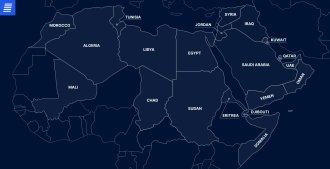

Countries with Arabic speaking population
Arabic is a descriptive language and has many ways of conveying similar meanings, which makes it almost impossible to produce a one-to-one text conversion. Arabic vocabulary and grammar are nothing like English. Arabic has grammatical genders and some phrases have several valid translations to choose from; for example, ordinal numbers can be male or female. Accurate translation depends on the meaning of the message, as a literal word-for-word approach will likely fail to resonate with the Arabic-speaking audiences.
Arabic also takes up more space than English. This can cause issues in accommodating content for an application or a website. To create a user-friendly and efficient interface, the text should be reduced to communicate the essence of the message and the design and layout should be adapted for Arabic. It might be necessary to create several content options to see which is the most usable and appealing. It is also important to choose professional Arabic localization services with a clear understanding of the target audience and industry-specific knowledge.
The Arabic language is written from right to left (RTL), though it can be bidirectional for phrases and words that have no direct equivalent and are untranslatable. This language characteristic influences the content layout and elements of the interface. All headlines, navigation bars, buttons, and other necessary components should be adapted to an RTL layout. At the same time, numbers in Arabic are written from left to right (LTR). This means that if a page includes various fields for personal information, such as a name and a phone number, it’s important to consider the direction of each field and make adjustments accordingly.
Arabic website or application localization is not only about the text—visuals also carry significant importance. When adapting images and design elements for the Arabic market, it’s crucial to be cognizant of sensitive topics, such as religion, politics, and gender. Some visuals that wouldn’t raise an eyebrow in the Western world may be offensive or unacceptable to Arabic customers.
RTL layout alignment is applicable for visuals as well. For example, images that illustrate steps and processes should be reversed to display the flow properly and avoid audience confusion.


Artificial intelligence (AI) and machine learning (ML) can be valuable tools in localization. However, effective localization requires specialized expertise to train ML models, particularly because Arabic and English belong to different language groups and have distinct ways of describing similar concepts.
The choice of programming language stack is also crucial, as they don’t all support multiple translations and different layout directions. Translation management systems (TMSs) are key to providing a localized software solution for Arabic markets, as they enhance the efficiency, scalability, and quality of localized content. These automated tools allow companies to quickly make changes and updates to the digital product.
Ongoing quality assurance (QA) for localized software solutions is essential to ensure usability and intuitiveness for the target audience. Regular reviews and analysis of the product help maintain consistent localization, including terminology and design elements, while delivering a seamless and flawless user experience.
We developed a multifunctional mobile sports application for a UAE startup. The client’s main request was to provide users of the application with flexible access to sports facilities nationwide. In addition to helping users find suitable gyms, the solution also allowed them to track their activity, participate in challenges, buy sports goods and services in an in-app online shop, and connect with other sports enthusiasts. Our UX/UI design team ensured that the application conformed with the brand message and values and offered users a positive experience.
In 2023, our client became the official partner of the Dubai Fitness Challenge (Dubai: 30×30). The EffectiveSoft team was asked to prepare the system for the influx of users and add new functionality, which we successfully implemented. During the month of Dubai: 30×30, the application performed flawlessly and doubled the number of regular users.
We created an application for iOS and Android that allows users to seamlessly perform trading operations. One of the stages of the solution development was localizing it for the Arabic audience.
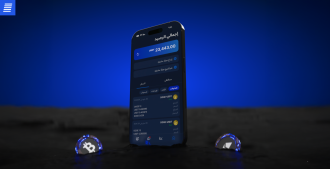

Our client, a Saudi Arabian company that provides asset evaluation services with a focus on real estate, wanted to enhance their industry presence with a dedicated platform. Our team designed and developed a web auction platform tailored for the Saudi region. To enable efficient performance and ensure compliance with local regulations, we integrated Alibaba Cloud. Another integration, Nafath (Saudi ID), supports secure authentication—after entering their unique Saudi ID number, users receive a verification code via a government mobile app. Our team also extended the platform functionality with other third-party services, including Google Maps to display locations of items and auctions and GoPay for financial transactions. While the primary audience is Saudi users, the system also incorporates a multilingual plug-in that supports both Arabic and English versions, extending access to international users as well.
As we continue to offer ongoing maintenance and support, the auction platform developed by the EffectiveSoft team stands out as an exceptional solution for streamlined bidding operations, helping identify market trends, understand buyer behavior, and map high-demand regions.
With the expansion of the Arabic software market, some technology trends will inevitably impact the field of Arabic application and website localization.
While these technologies currently have limited applications in Arabic localization, advancements in AI will eventually enable machine translation to manage tasks such as applying complex morphology and accommodating free word order, conveying ambiguous words and concepts, and even recognizing cultural context and relevance. The use of AI and NMT will allow for faster localization without losing quality.
By using cloud computing services for Arabic software localization, companies can ensure an easily manageable, scalable, and fast process. Cloud provides localization projects with a centralized translation repository; version control and management; and a collaborative environment that allows different teams, including translators, localization experts, mobile developers, QA, and other specialists, to work together in real time.
AI-enabled speech-to-text (STT) and text-to-speech (TTS) models for different Arabic dialects are already on the horizon. With the help of these technologies, it will become easier to localize into different dialects and language varieties in real time, converting spoken language into written text and vice versa. STT and TTS models will also be able to power voice user interfaces, enhancing user experience with personalized assistants.
Localization of websites or applications into Arabic is challenging when you don’t understand the culture, target audience, and language. Poor Arabic software localization leads to low engagement and, eventually, revenue loss. Given the significant potential of the MENA region for businesses seeking to penetrate new markets, it is vital for these businesses to consider Arabic audiences when developing their software solutions. To learn more about entering the Arabic market and launch your project, contact our team.
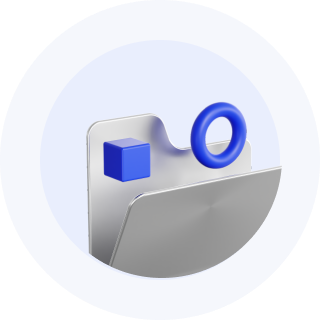
The MENA region is a rapidly growing market with an enormous audience, offering new opportunities for growth and market reach. Since Arabic is the sixth most spoken language in the world, companies should seize the chance to expand their brand presence to the Arabic-speaking community, capitalizing on the geopolitical, economic, and cultural uniqueness of these countries.
Arabic translation means converting texts from other languages into Arabic, focusing on language accuracy. Localization involves conveying the message from other languages into Arabic, paying attention to the cultural context and social and linguistic nuances of the target language community. Localization adapts texts for Arabic-speaking audiences, helping them relate to the content and find it more appealing.
The timeline of a project depends on the complexity of the product, the number of screens, and the word count. The localization team size also matters. By scaling the team, it is possible to adapt to almost any release schedule.
Since localization is usually an ongoing process that happens simultaneously with software development, it takes significantly less time to get the product to market. It is also more flexible than localizing the application or website after it is ready for release. Due to the iterative nature of the continuous software localization process, it is easier to detect and fix any mistakes, which contributes to the quality of the final product.
The cost of a localization project depends on various factors, including the size of the localization team and the complexity of the project. The industry and the type of content (text, images, audio, video) also play a major role in pricing. Contact our team to get a project estimate.
To make sure that the localized content aligns with all the linguistic, visual, cultural, and functional requirements, we implement localization quality assurance. This includes translation accuracy, consistency in terminology, layout conformity, adherence to cultural nuances and taboos, observance of cultural context, conformity with local regulations, and other key localization aspects.
Can’t find the answer you are looking for?
Contact us and we will get in touch with you shortly.
Our team would love to hear from you.
Fill out the form, and we’ve got you covered.
What happens next?
San Diego, California
4445 Eastgate Mall, Suite 200
92121, 1-800-288-9659
San Francisco, California
50 California St #1500
94111, 1-800-288-9659
Pittsburgh, Pennsylvania
One Oxford Centre, 500 Grant St Suite 2900
15219, 1-800-288-9659
Durham, North Carolina
RTP Meridian, 2530 Meridian Pkwy Suite 300
27713, 1-800-288-9659
San Jose, Costa Rica
C. 118B, Trejos Montealegre
10203, 1-800-288-9659